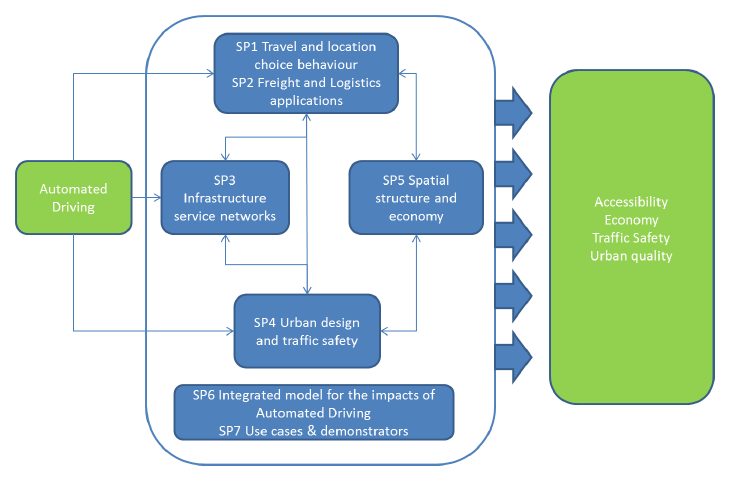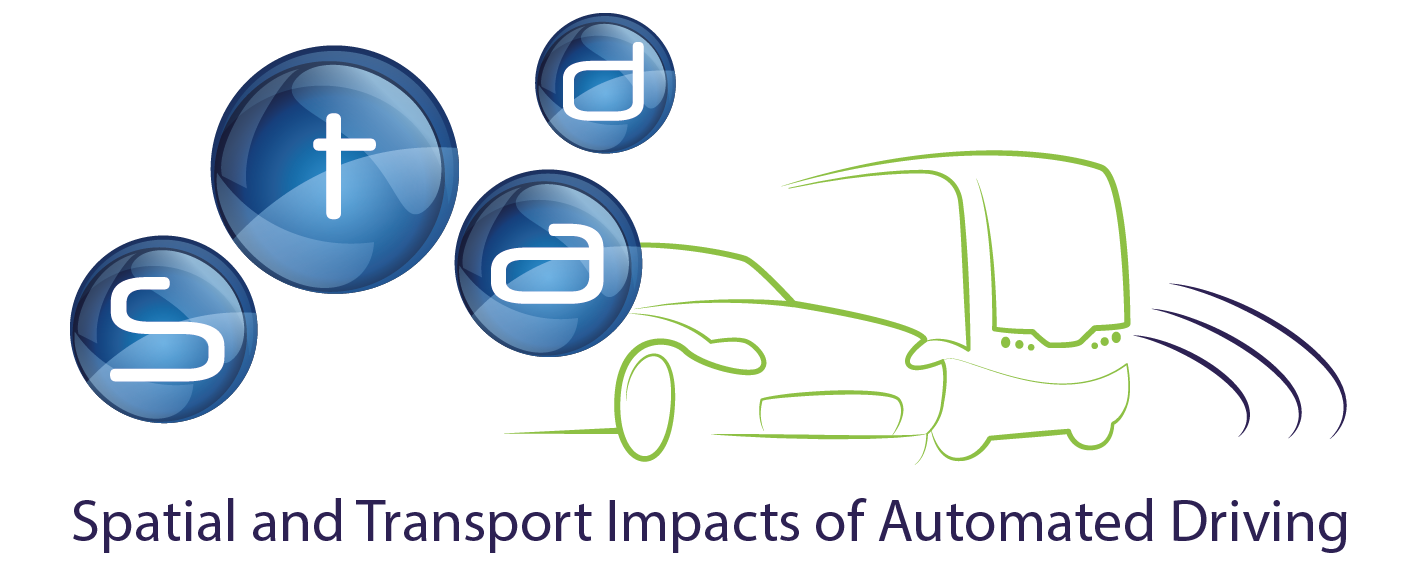The Spatial and Transport Impacts of Automated Driving, or STAD, is a joint research project about the implications of the future of accessibility and spatial development of mobility with respect to autonomous driving technologies.
As technologies and trends develop around the topic of automated driving, it becomes crucial for all entities that would be affected by such developments to be prepared for changes in the near future. Having 5 levels of automation identified, the most advanced levels of automated driving (5) as disruptive innovation leading to drastic changes in mobility patterns and even spatial structure of cities and regions.
Much progress has been made in understanding the short term and small scale impacts of less advanced levels of automated driving on driver behavior and traffic flows. However, much needed research into the longer term, indirect and larger scale impacts of more advanced levels of automated driving, on mobility, logistic and residential patterns and spatial-economic structure, is still in its infancy.
As a result, this project surfaced, bringing academic and governmental institutions, as well as private companies to collaborate on research and sub-projects that aim to fill the crucial knowledge gap by assessing the wider, long term transport and spatial implications of advanced levels of automated driving, which in turn may provide measures for better decision making for long-term transportation investments and planning. Particular topics that were taken into account in the research articulation pertain to regional development and accessibility, urban design, pedestrians and cyclists, impacts on public transport and parking.
The theoretical basis of the research project is the ‘ripple model’ of automated driving. The ripple model represents a metaphor of how impacts of driving automation propagate over time from changes in traffic and travel characteristics to spatial implications such as infrastructure and location choice and ultimately to economic and societal changes.
Concerning the research methods, high importance was attached to models and data for specific regional use cases and connections to current and future pilot projects. In order to distribute the different research topics, the scientific project approach is based on a coherent set of sub-projects.


